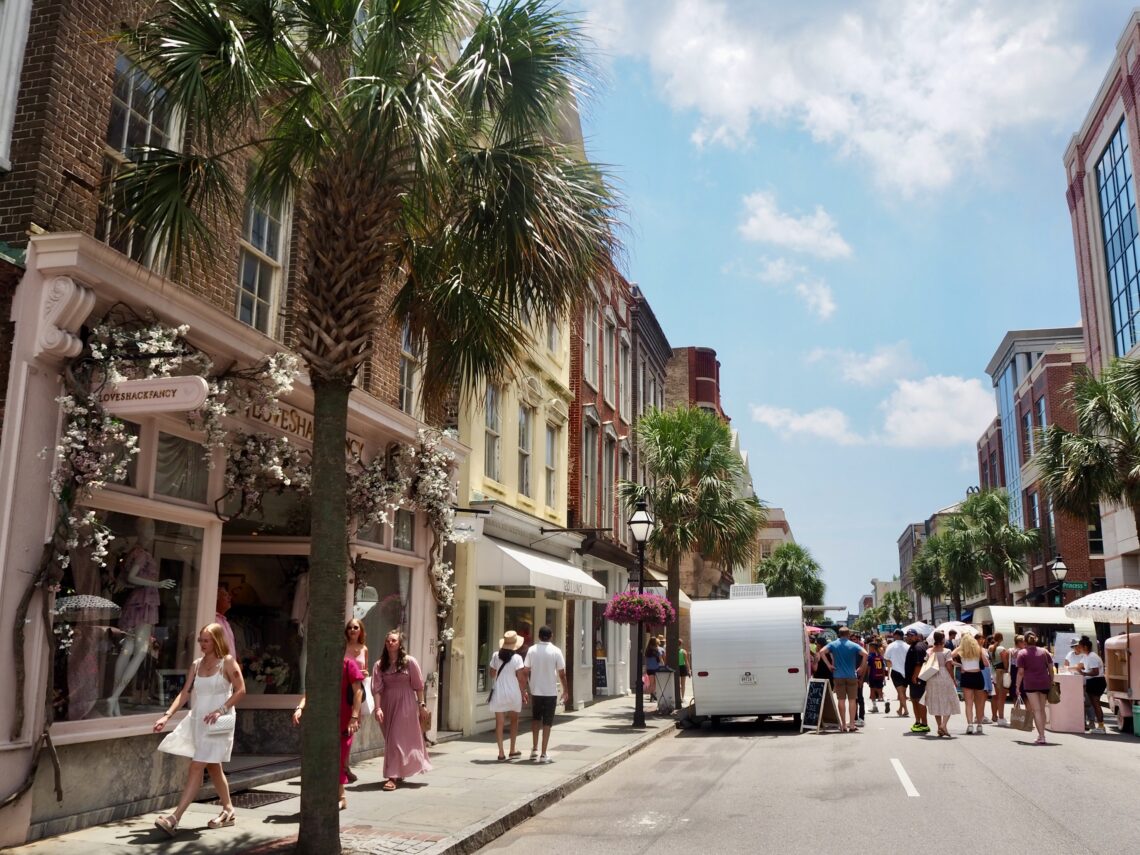
Highlights of Charleston, SC | USA
The next couple of weeks of my USA trip would be spent exploring the American South, including taking on its brutal summer humidity. There are a lot of iconic cities in this part of the country, with some deep history to unearth (both the good and bad). Departing Charlotte in the early hours of a Sunday morning, I caught a bus a few hours south to the coast to explore the highlights of Charleston, South Carolina. To be honest, while I was travelling by road as much as possible to see the landscapes of the USA, I did sleep through most of this one. I arrived in the middle of the day and had the afternoon to wander, before a couple of days of working in the mornings again.
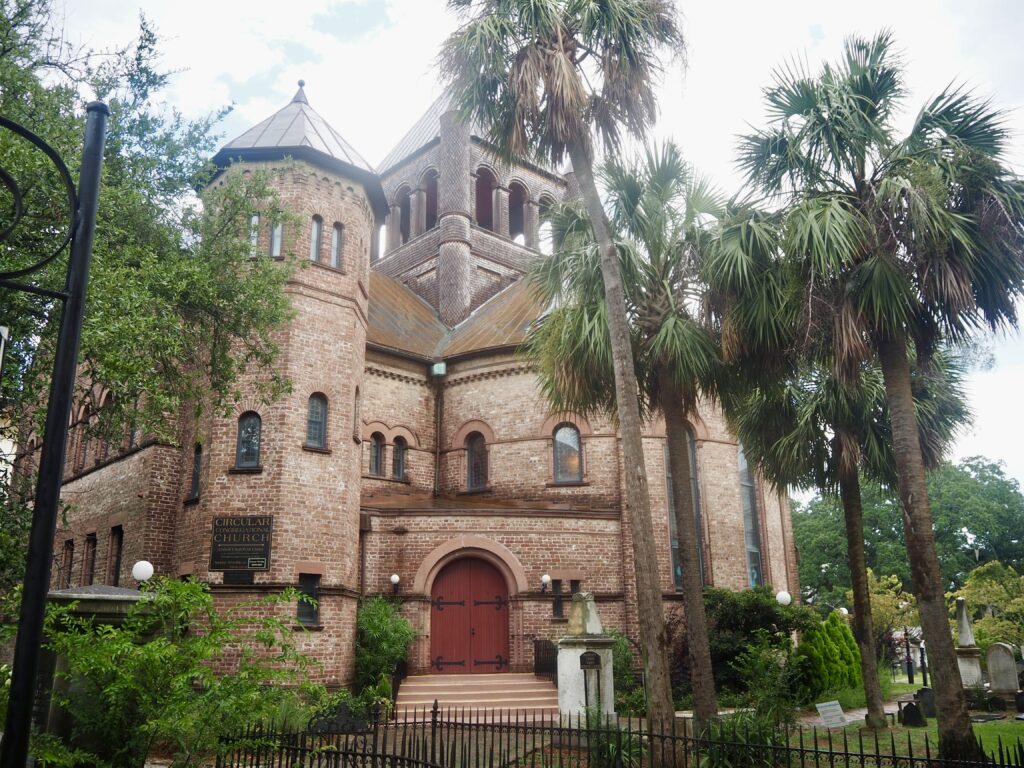
Charleston City Market
The bus drop-off (beside the train station) is a little ways outside the city centre, so I called an Uber to take me to drop off my bags. My hostel was in the Cannonborough district, not too far from the main city centre and public transport is pretty non-existent, so I set out again on foot. There were immediate pros and cons to this plan! The pros were getting to see the city streets, which are endless rows of quintessential Southern houses with their wrap-around porches and balconies and wooden railings and shutters. Many of them are painted bright pastel shades and are just all so pretty!
The downside though, was the Southern humidity in mid-August. I was a walking sweat bucket about five minutes after stepping outside. Which was only enhanced by the long detour I took. My plan had been to visit the new International African American Museum, which opened this year to very positive feedback. I got all the way there (about 30 mins) only to discover entry was by advanced timed-ticket only and it was sold out for the next week… Never mind then.
I continued walking south instead, towards the city centre, eventually reaching the Charleston City Market. Being in the shade and surrounded by fans was a welcome relief! It’s a historic building, dating back around 200 years, so has fans but no air conditioning, of course. The market is a mix of permanent shops and temporary stalls, mainly selling crafts, clothing and souvenirs. I slowly browsed my way through it from one end to the other, picking up a new magnet along the way. The heat was still wearing me out though, so I ducked into a nearby cafe for an iced drink and some AC for a break.
King Street
When I had sufficiently cooled down again and was ready to continue, I braved the heat once more. Next to the market, I spotted my first of many horses and carriages, available for city tours to really capture the city’s vintage atmosphere. I soldiered on by foot though, turning on to King Street. This is probably the biggest major street in the city centre, lined with shops and restaurants.
At the weekend, it becomes pedestrianised, so there’s plenty of room to stroll along without worrying about traffic. There were also a few food trucks, market stalls and street performers along the way. This gave the street a lively, social atmosphere and made it an ideal weekend destination. I ambled along, taking my time to window shop and admire all the architecture around me. I followed King Street until it met Broad Street, turning left to City Hall, a vast, white former plantation estate. Behind it lies Washington Square, the meeting point for my next activity.
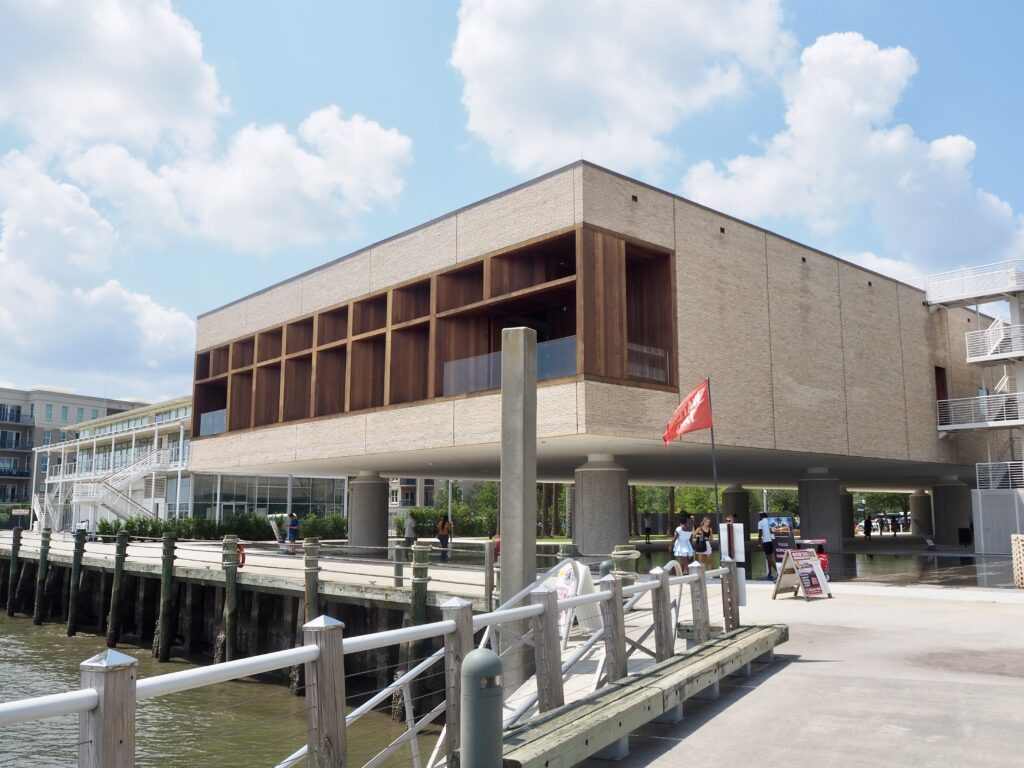
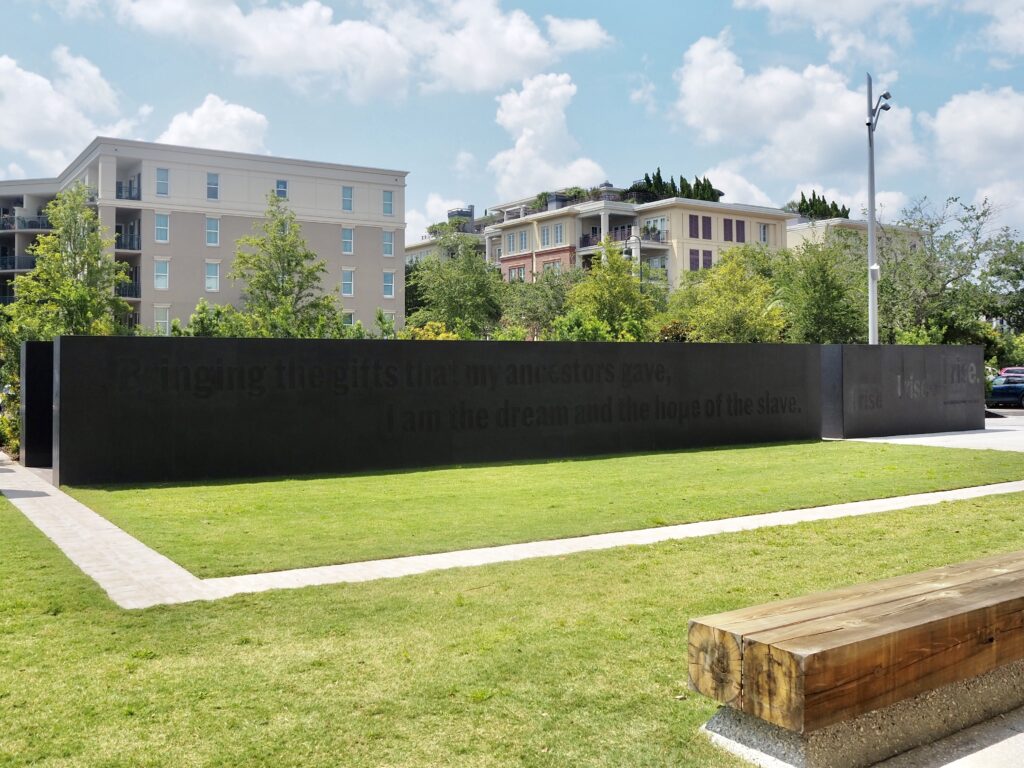
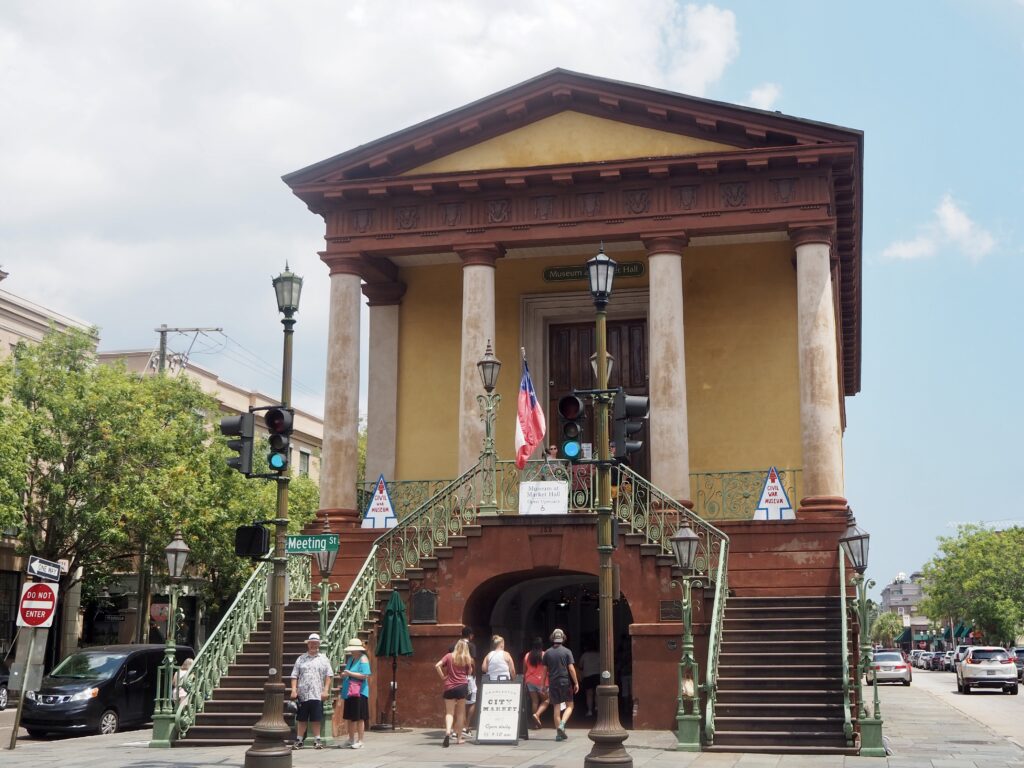
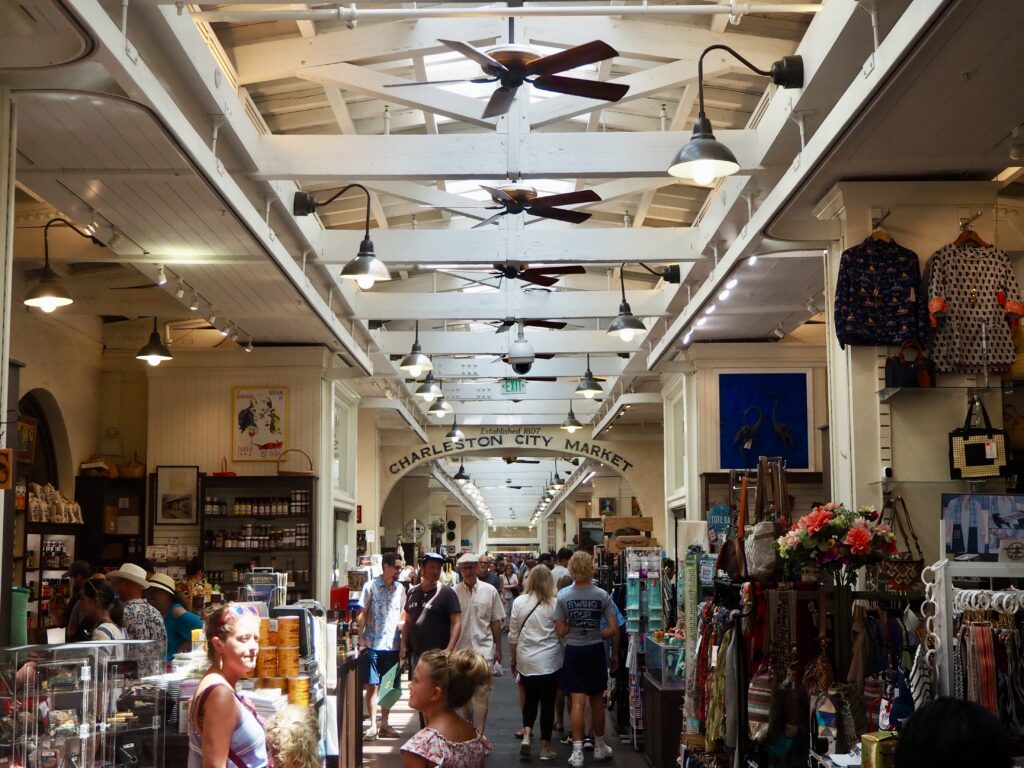
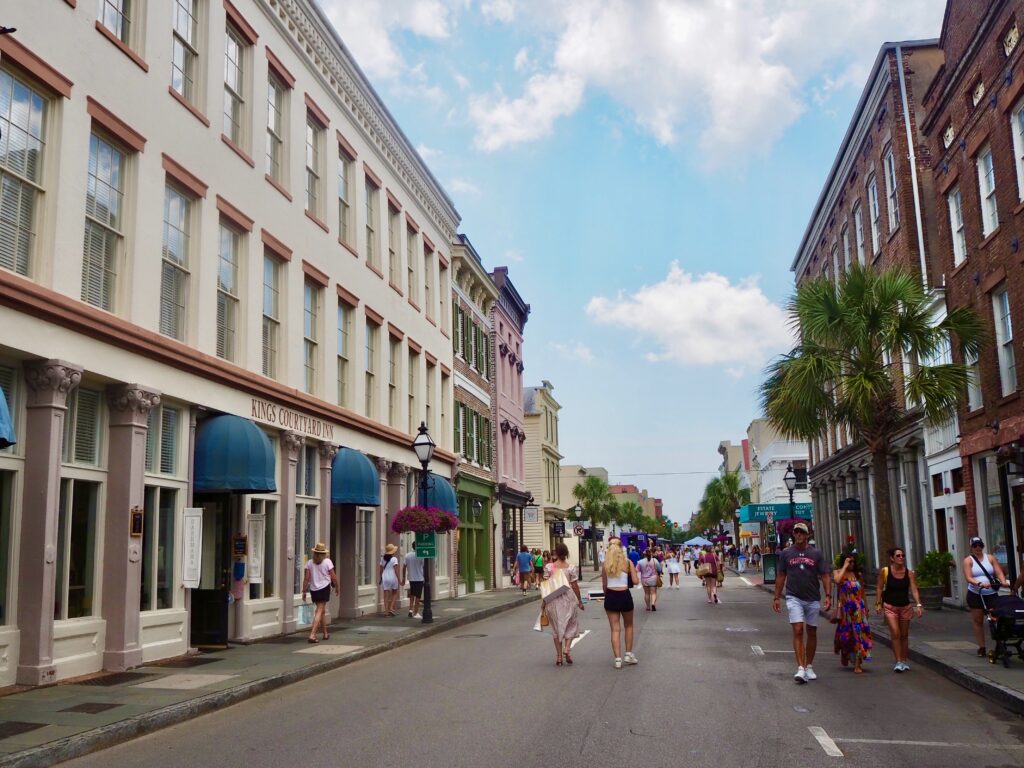

Walking Tour
The best way to cover the highlights of Charleston in a limited amount of time was to join a walking tour. There’s so much history in the city I would have probably missed otherwise! Starting in Washington Square, our guide told us all about the settlement of the city by English colonists in 1670, making Charleston one of the oldest Southern cities. We explored the French Quarter and all its cobblestone streets (made from stones brought from England by ship as ballast), towering palm trees and bright flowers in bloom. Many of the buildings here are now small museums, though I knew I wouldn’t have time to visit all of them.
Our guide, of course, discussed the history of slavery in Charleston, which was a major port for bringing Africans into the USA. A lot of them came via the Caribbean, which influenced the style and atmosphere of the city. She also gave us some suggestions for plantations to visit. Touring plantations got a bad reputation in recent years, as there was too much romanticising of the pretty building. But many of them have now incorporated educational slavery exhibits, making them worthwhile to visit, though I wasn’t going to have enough time on my trip. Our tour continued winding south through the city, looking at notable architecture along the way.
The Battery
Then, it started pouring rain! And I mean, torrential, soaked-to-the-skin in a matter of minutes rain. Several people abandoned the tour, but having been in the guide’s shoes before and knowing how disheartening that can be, I stuck it out. It did brighten up a bit afterwards, though it took me a couple of hours to fully dry out. This was to be a recurring theme my whole time in Charleston, as a summer rainstorm hit in the late afternoon every day.
The tour ended at White Point Garden by the Battery, where we could look out at the Cooper River. Fort Sumter sits at its mouth, defending the city, and can be visited on a boat trip. Charleston was an important location during the Civil War, as Fort Sumter was the site of the first battle that started the whole thing when Confederates seized it from the Union. The war destroyed the city’s former prosperity and it took a while for it to recover and become what it is today. There’s a lot more that we covered on the tour that I’ve probably forgotten now, but it was definitely a good introduction to Southern history!
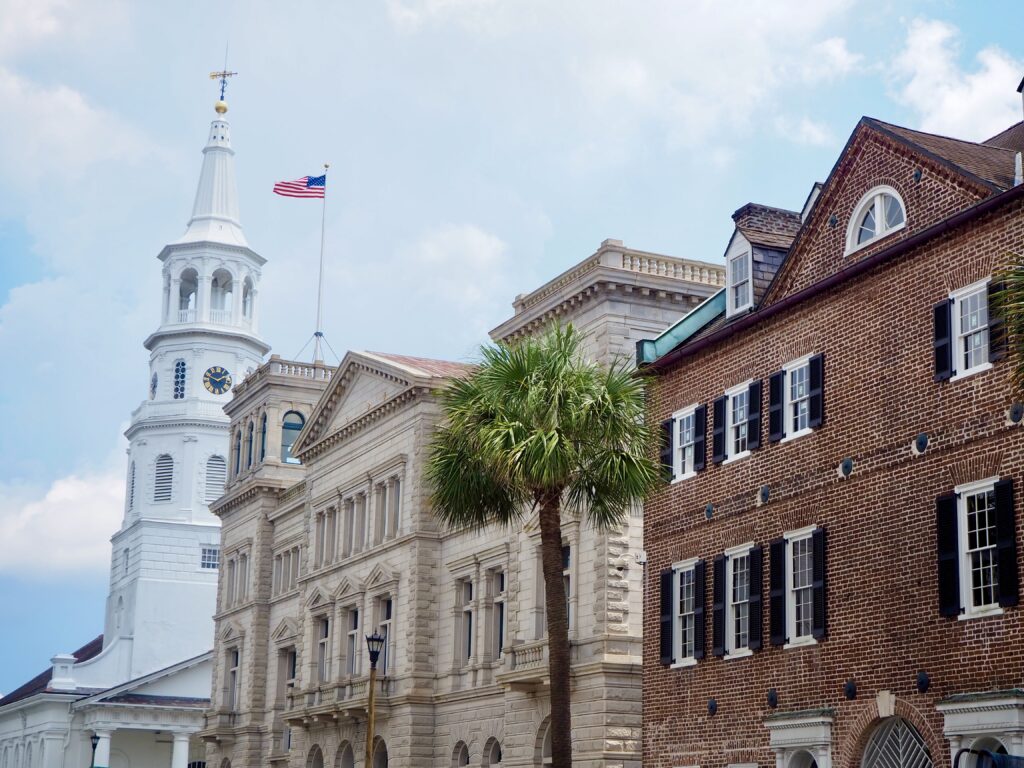
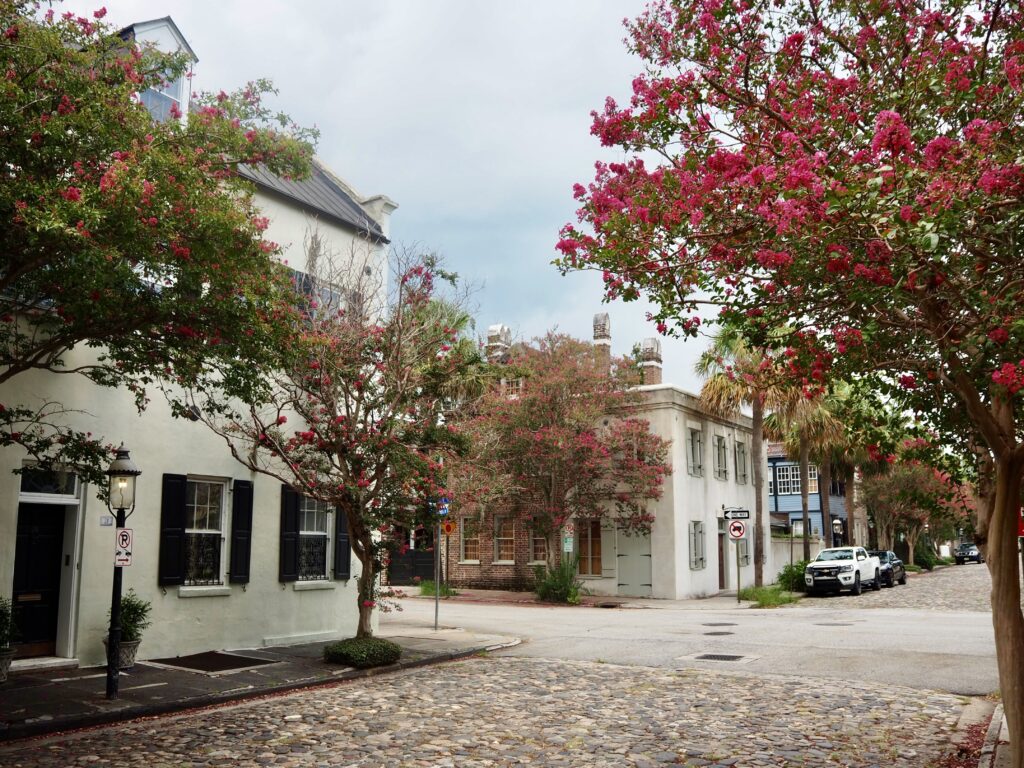
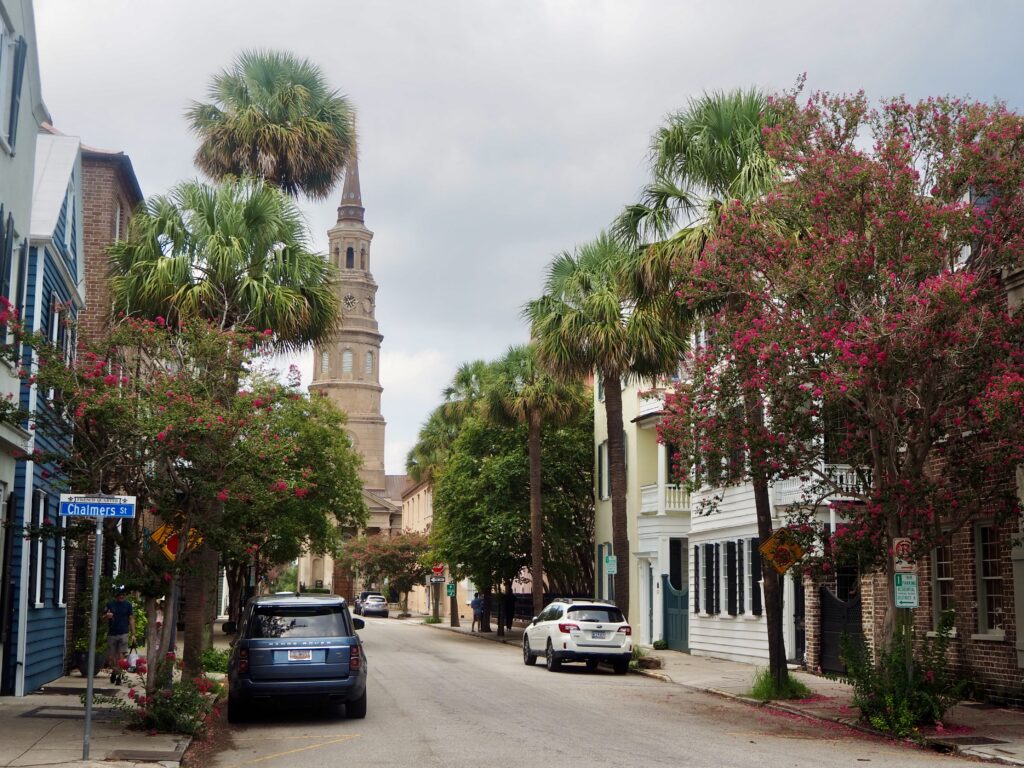
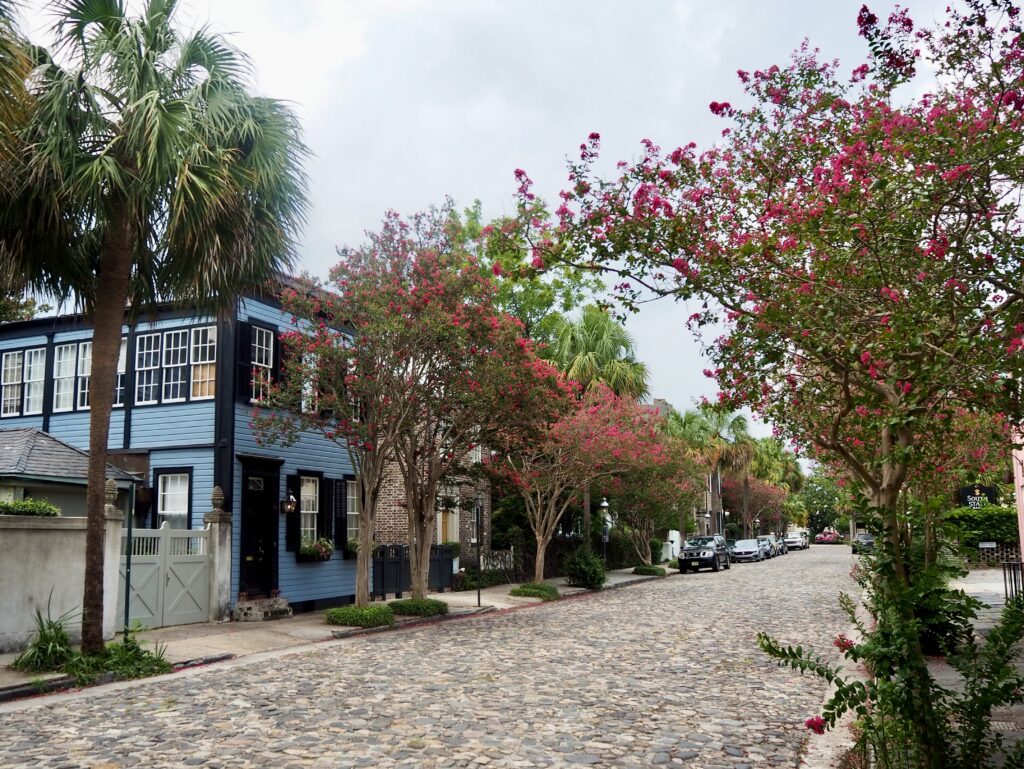
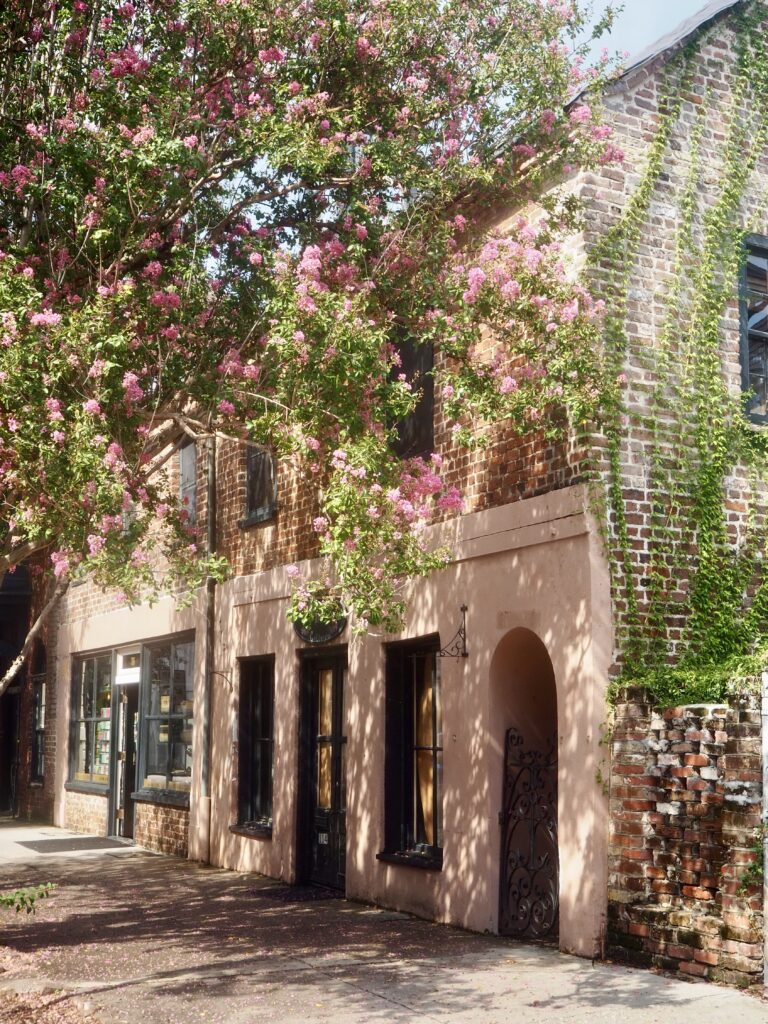
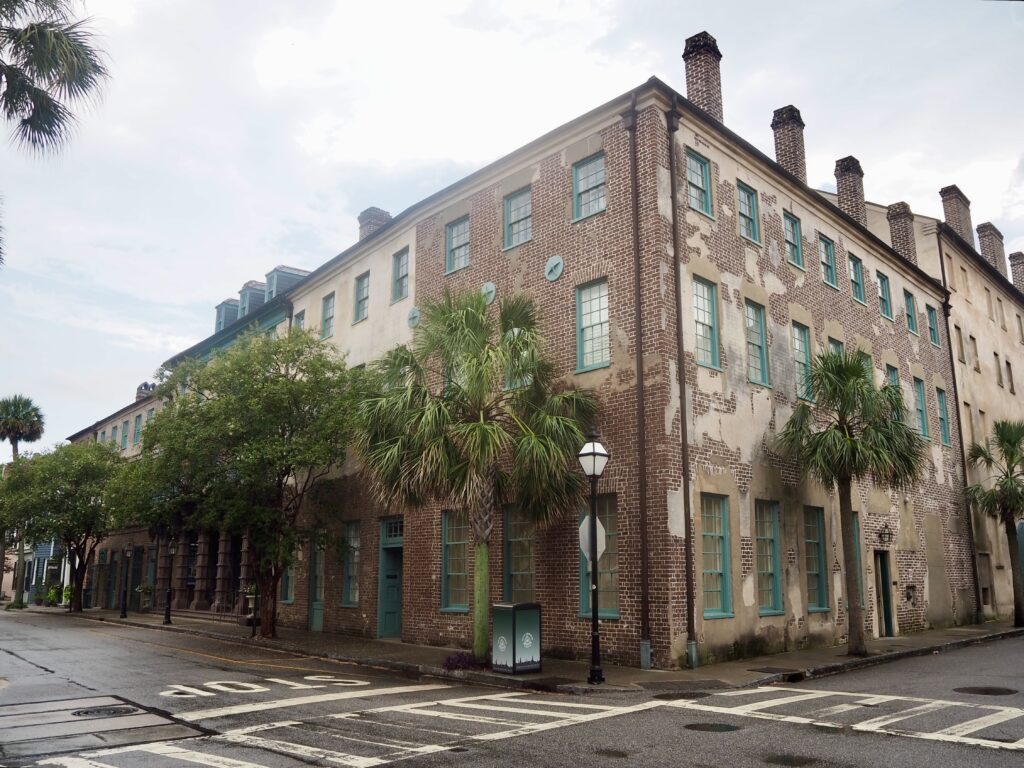
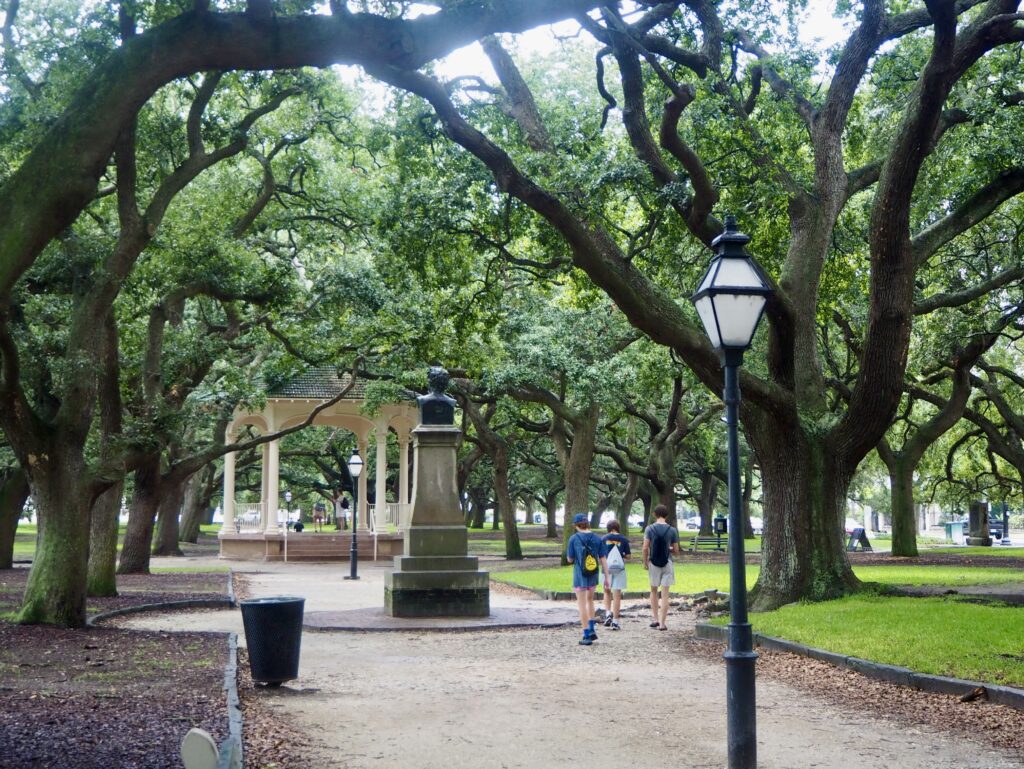
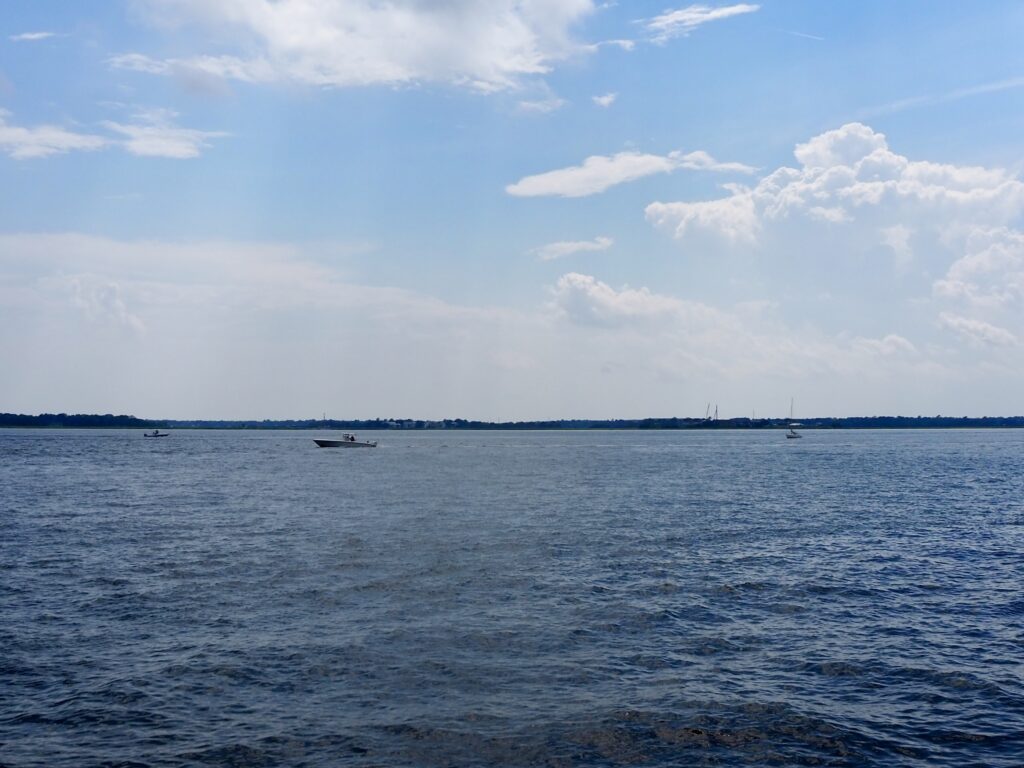
Rainbow Row
Now, we had passed Rainbow Row during the tour, but I decided to loop back to get more photos, without the rush of keeping up with a tour group. All of the beautiful architecture is certainly one of the highlights of Charleston, with pastel-coloured buildings everywhere you look. However, Rainbow Row is the pinnacle, or at least the most popular, of them all. This series of 13 colourful houses runs along a stretch of East Bay Street, not far from the waterfront. The buildings were first painted in the 1920s and today, although each is privately owned, city ordinances require the colours to be maintained.
Such a pretty backdrop is, of course, a prime location for Instagram portraits, so it can be a challenge to get photos without others posing in them. Trees line the street as well, which block the buildings slightly from the other side of the road but are a nice addition in their own way. I wandered up and down, crossing the road back and forth and dodging other people until I was satisfied and ready to continue on.
Waterfront Park
It’s a short walk over to the Waterfront Park on the city’s eastern shore, which is home to another of the highlights of Charleston – the iconic Pineapple Fountain. It seems to appear in a lot of photos when you search for anything to do with Charleston! It’s actually a relevantly recent addition to the city, built in 1990 after Hurricane Hugo, making it a symbol for the city’s resilience and restoration. Pineapples have been symbolic in Charleston long before that though, since they started to import them from South America through the port. They were a rare delicacy for the time that became a symbol of status, wealth and most importantly, hospitality, as offering your guest a pineapple was a high honour to bestow on them. And of course, the South is still known for its hospitality!
I wandered up the coastline towards the park, stopping to admire the fountain. Which also had several children splashing and swimming in it! There’s a second fountain at the northern end of the park, also full of children cooling off in the humidity! Though they didn’t need to for much longer, as another afternoon shower soon hit. I sought shelter on the covered pier, where I nabbed a seat to watch the storm clouds until they passed.
Some locals were crafting and selling roses made by weaving sweetgrass nearby as well. Sweetgrass basket weaving, and now roses too, is a custom of the Gullah Geechee people. They are the descendants of the enslaved West Africans brought to the Southeast coast of the US, who established and preserved their own culture. More on that in Savannah! Once the rain cleared, I made a break for it, picking up dinner to take back to the hostel.
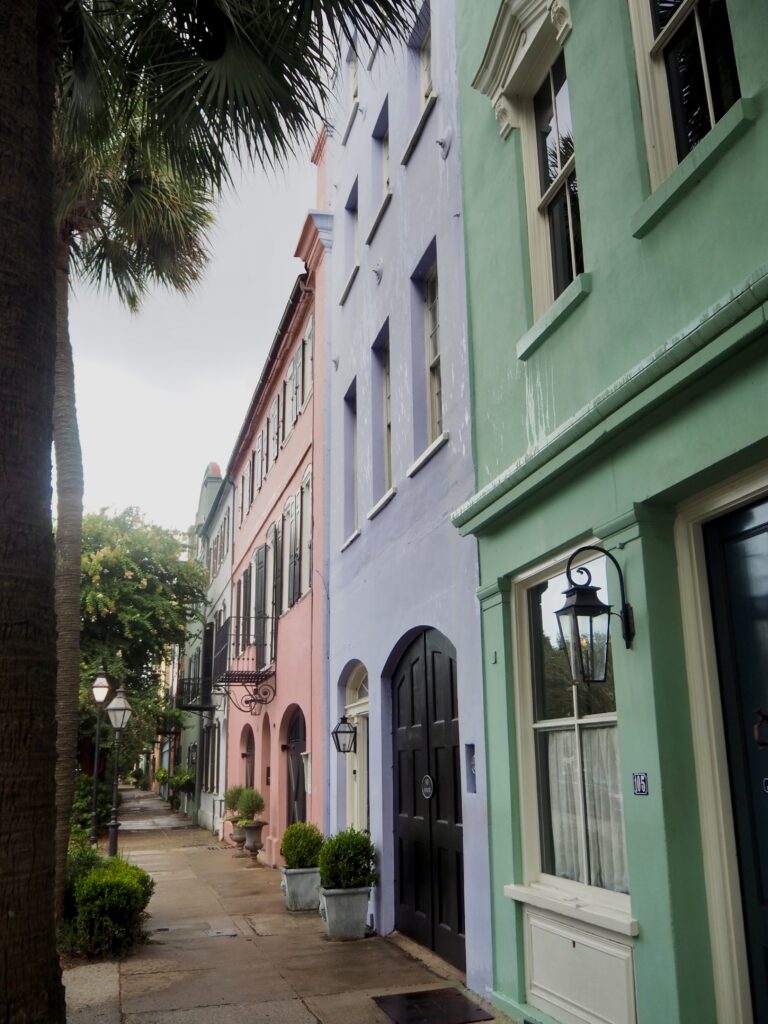
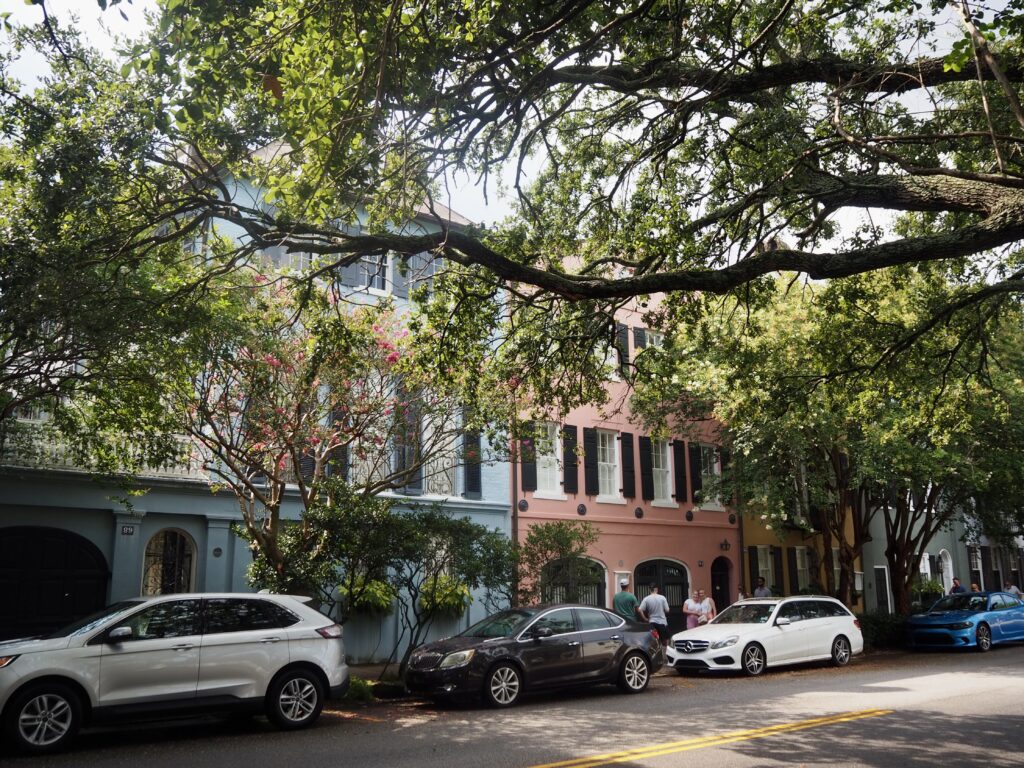
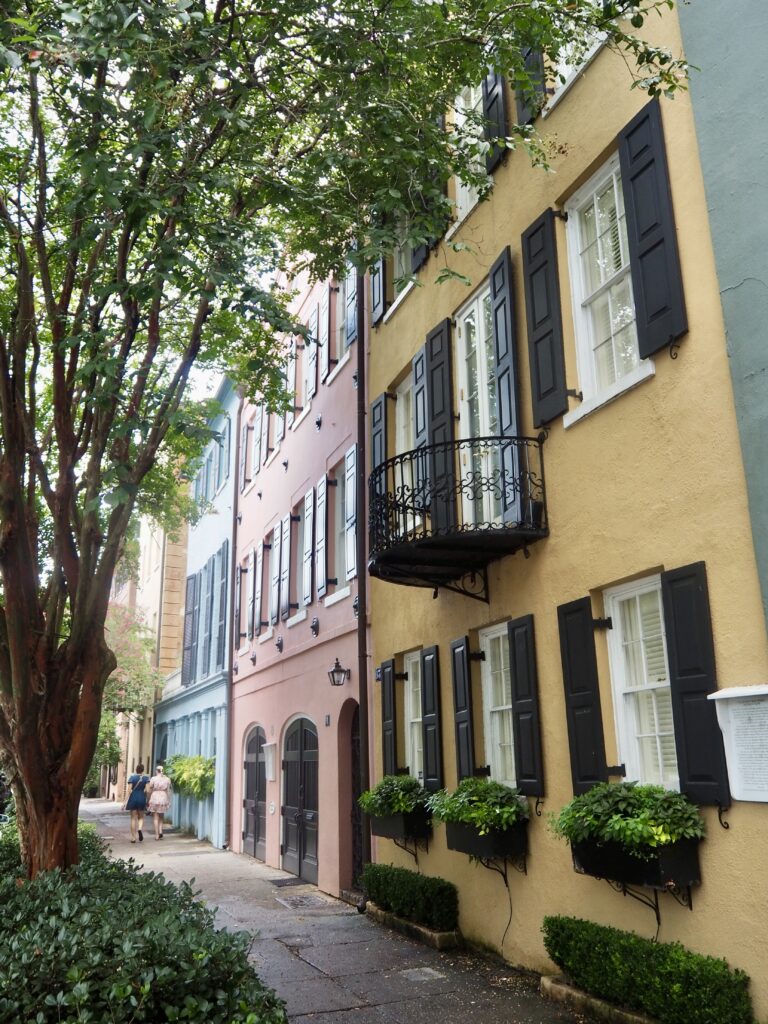
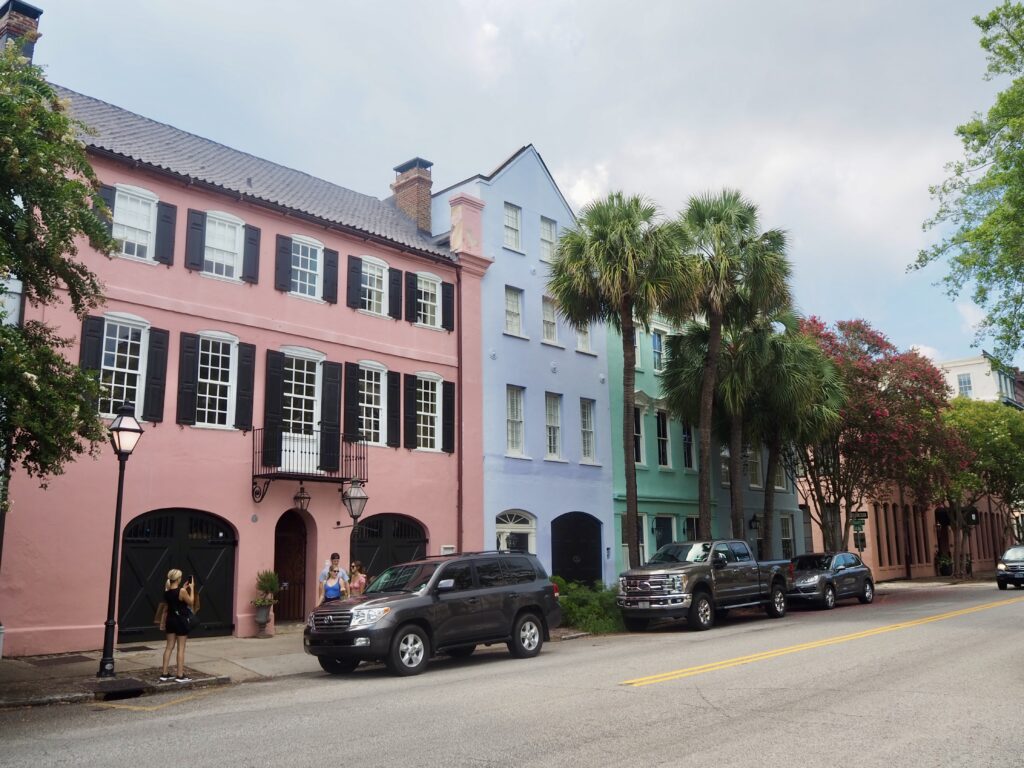
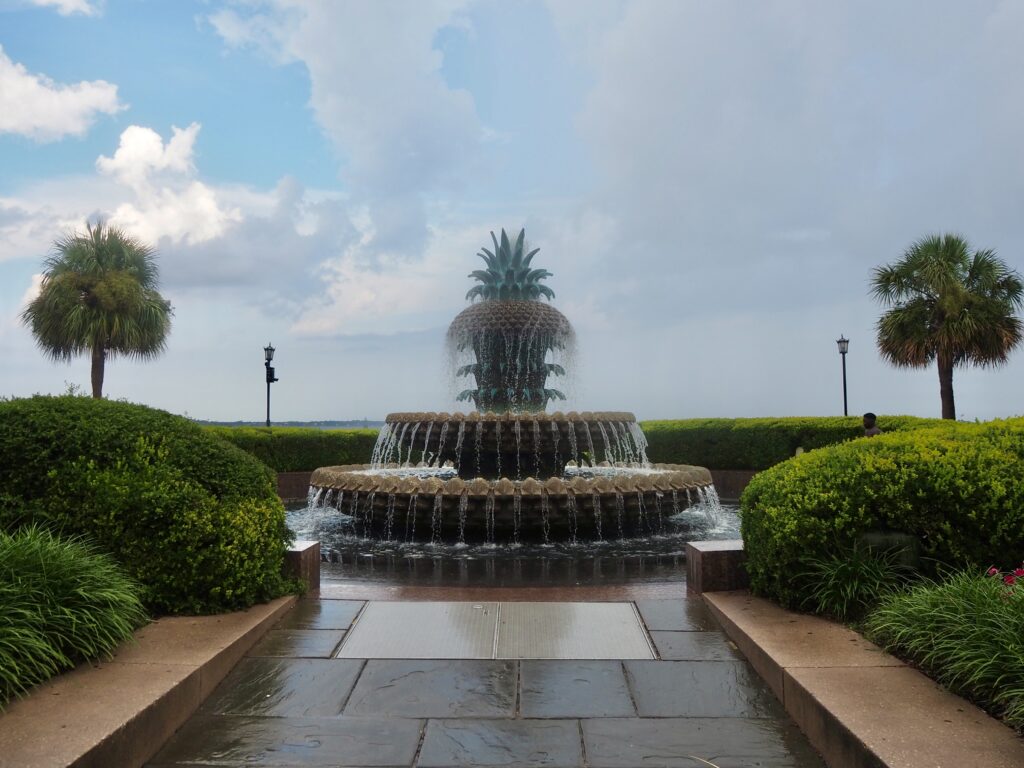
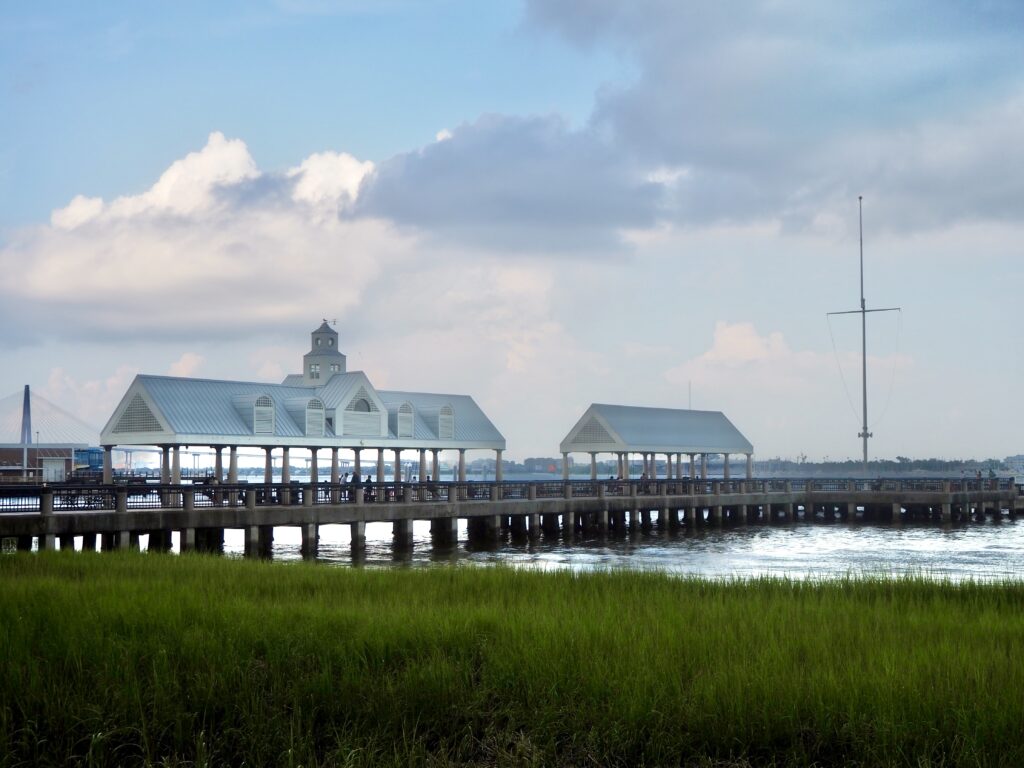
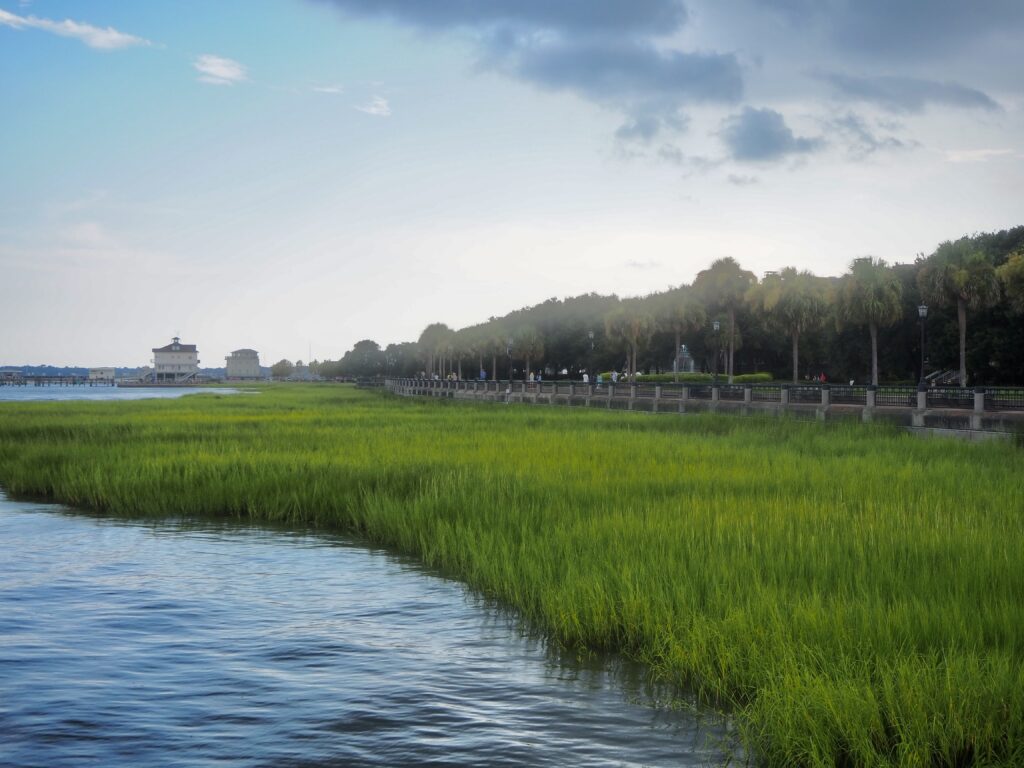
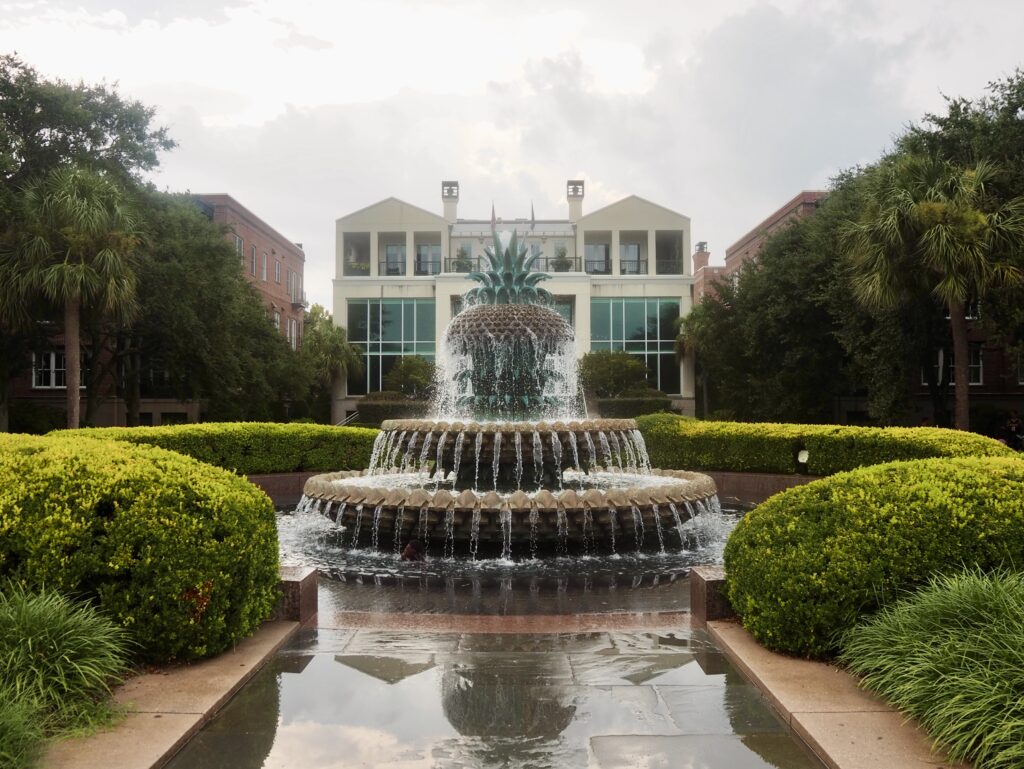
Folly Beach
The next day, I finished work around midafternoon and headed out to make the most of being near the coast again. There are a few beaches near Charleston, but you have to drive or get a taxi to any of them – public transport isn’t an option. I decided to check out Folly Beach, to the southwest, about a half hour ride away. The coast around Charleston is composed of lots of islands, separated by narrow rivers. Many of them were once plantations, as rice grows well here. As it does in West Africa, which is why the area had so many slaves from that region, for their agricultural knowledge. The Gullah Geechee people now largely inhabit these islands today.
I headed down to the beach as soon as I arrived, eager to be back on the sand for the first time in months – since Vancouver Island maybe? I started by wandering along the pier, a massive wooden structure jutting out into the Atlantic. Dozens of fishers had their rods stuck into the sides, sitting back and relaxing while waiting for a bite to come along. It was kind of crazy to be gazing out east across the Atlantic, after spending most of this year looking west to the Pacific! After coming down from the pier to the sand, I even braved a swim. It wasn’t too cold, but the large waves made it quite rough and tiring to stay in for too long. I dried off in the sun for a while, then took a walk up and down the sand, people-watching along the way.
Folly Island
After a couple of hours on the beach, I came back up into the town. Technically, it’s also called Folly Beach! The main strip is a short road leading inland lined with shops and restaurants. The surrounding streets are more residential, with holiday accommodation sprinkled in. I walked up the street to Folly River Park, where I found another pier. This one stretched out towards Folly Creek, one of the many tributaries criss-crossing the island. The tall grasses growing in the wetlands are very typical of this part of the world and an important ecosystem. Watching the kayaks and boats whizzing along the creek was like scenes I’ve seen in movies before!
I backtracked into town again, checking out a few restaurant menus along the way. Several were looking pretty busy already, so I ended up picking one where I could get seated straight away. Being by the coast, it seemed appropriate to try the famous Charleston seafood as well. And at a place called Coconut Joe’s, amongst the Caribbean influence of the region, coconut shrimp definitely felt like the right choice! Once I finished, I called another Uber and zoomed back to the hostel, arriving just as this afternoon’s rainstorm hit.
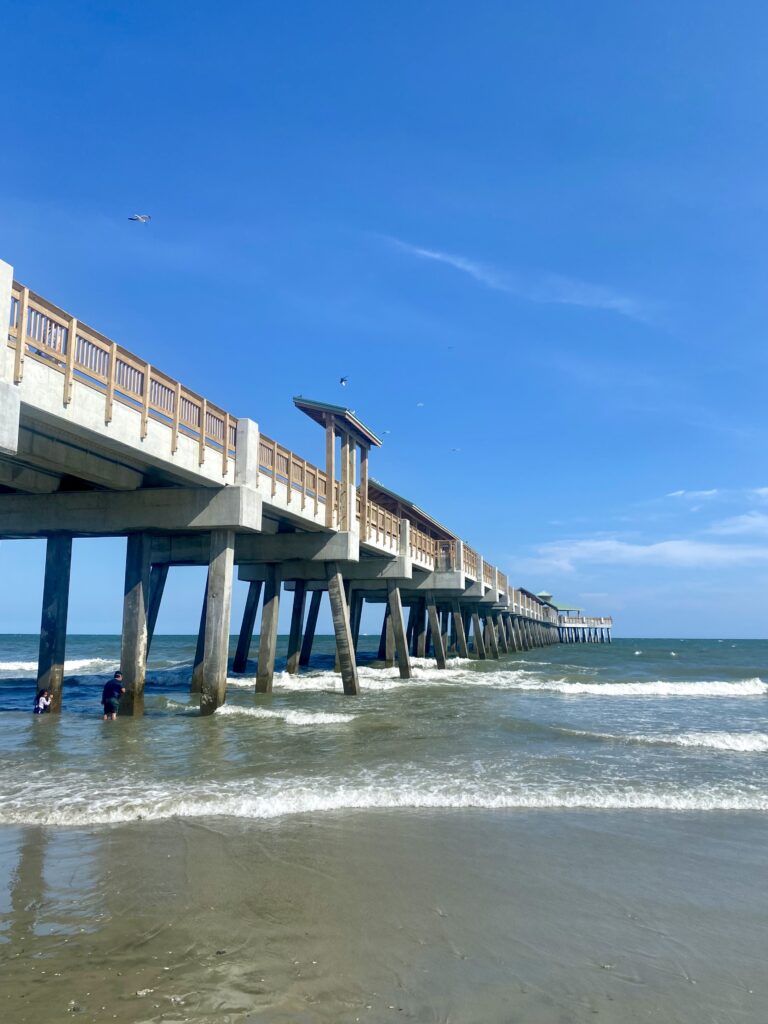

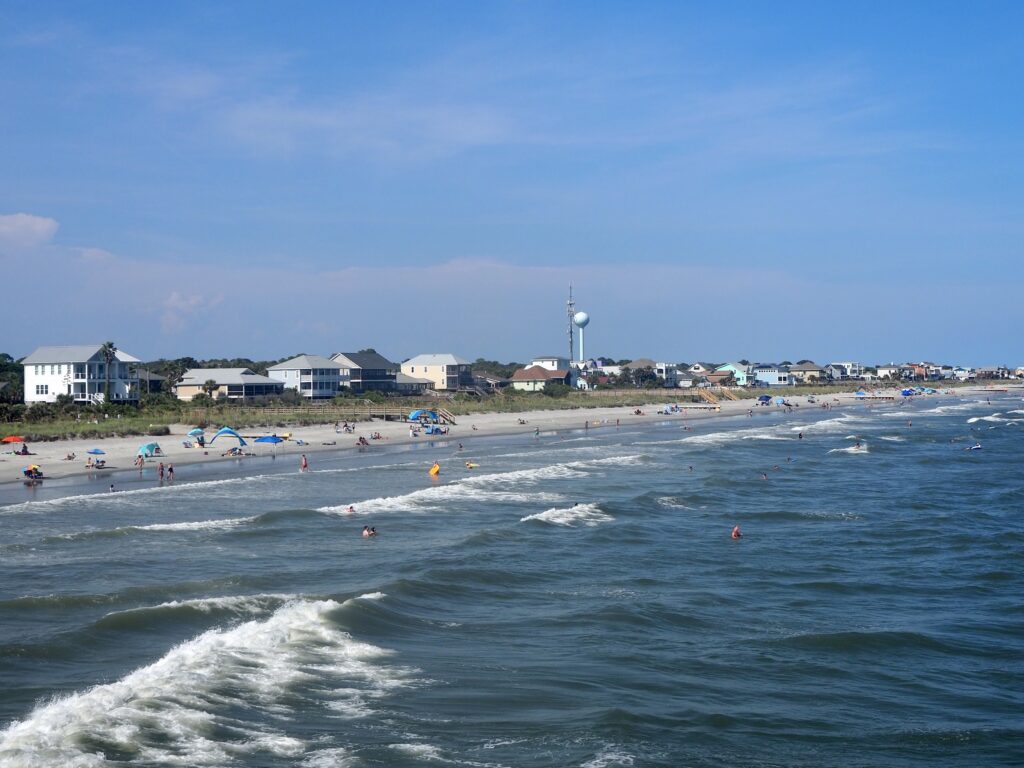
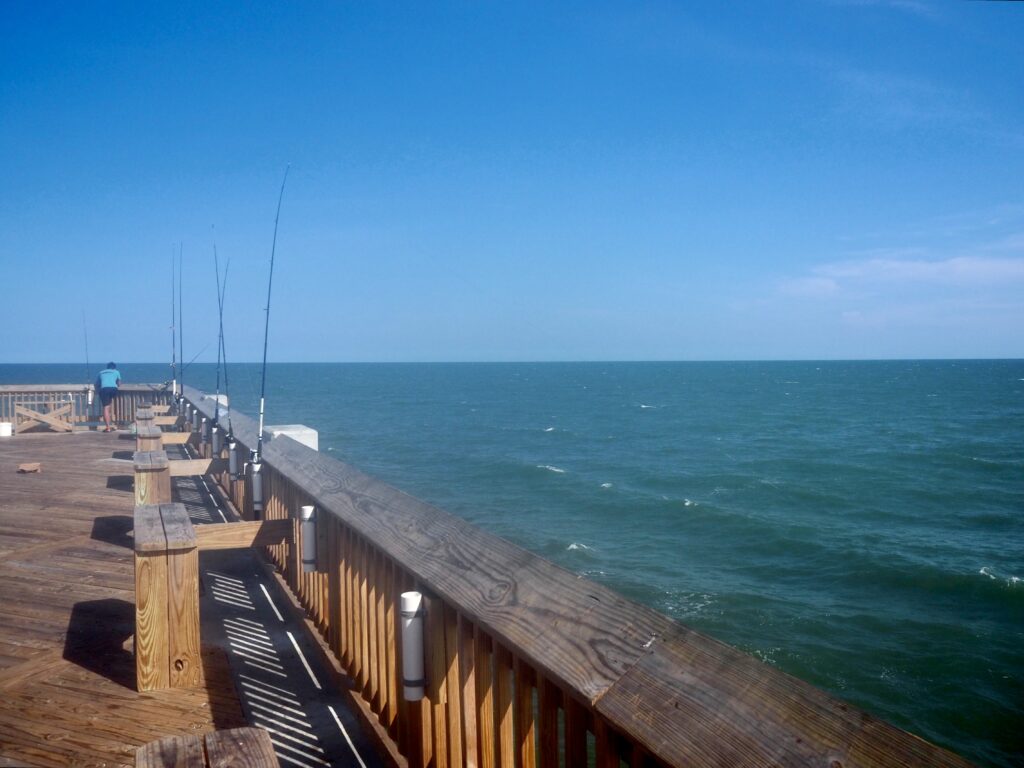
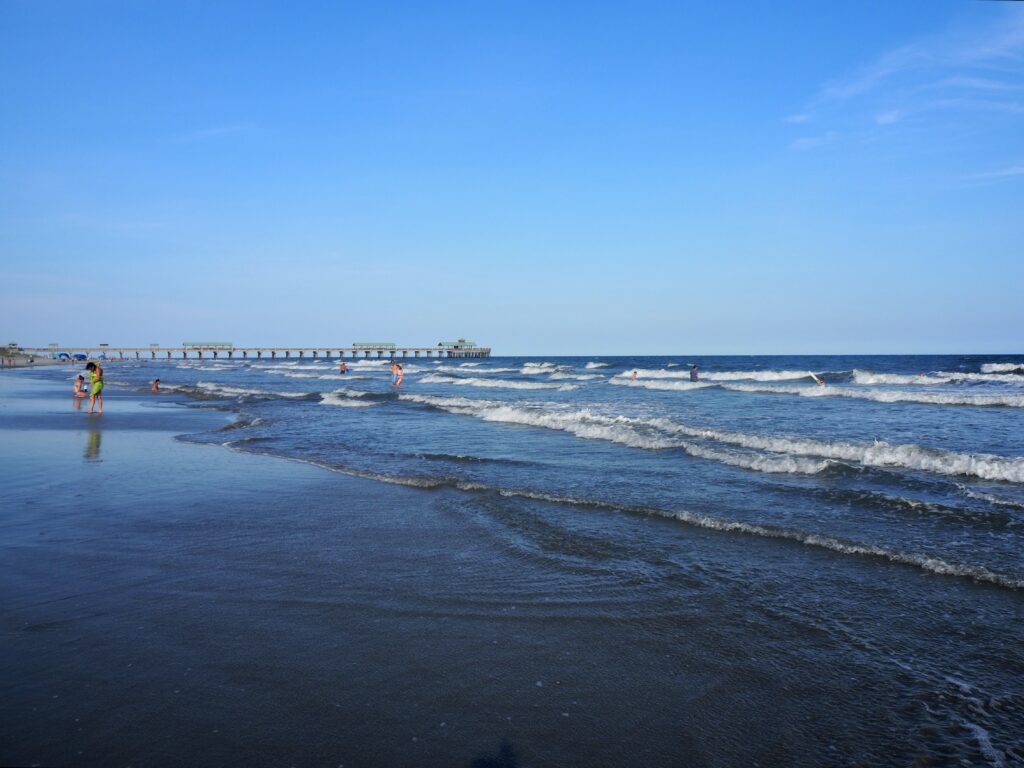
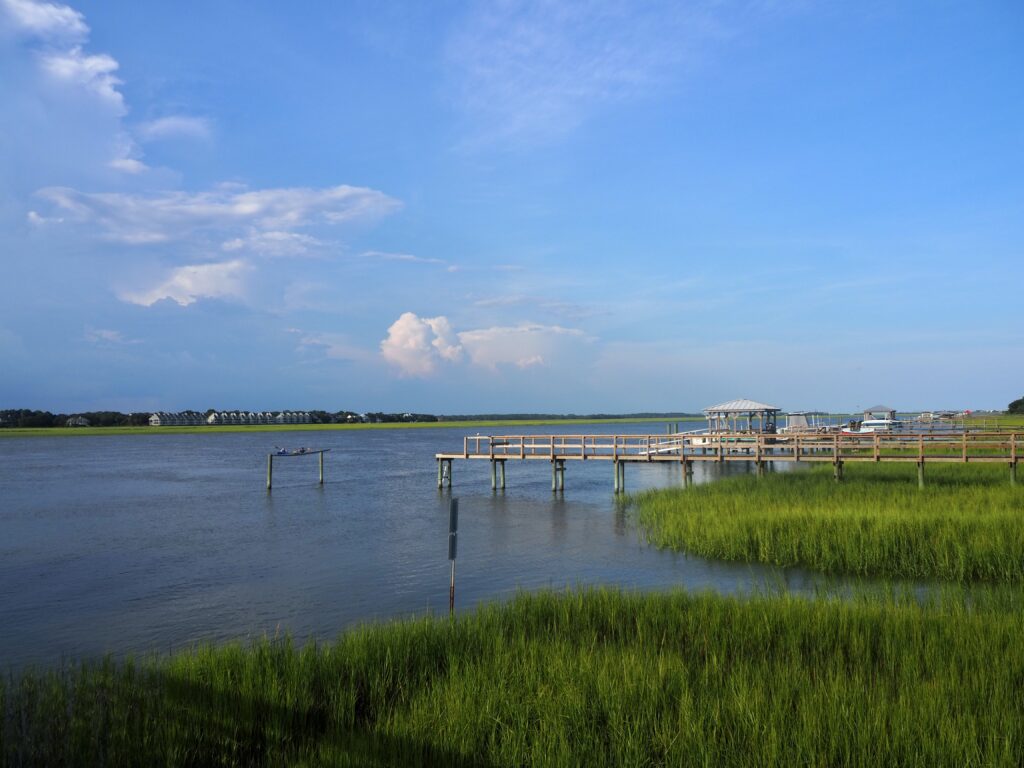
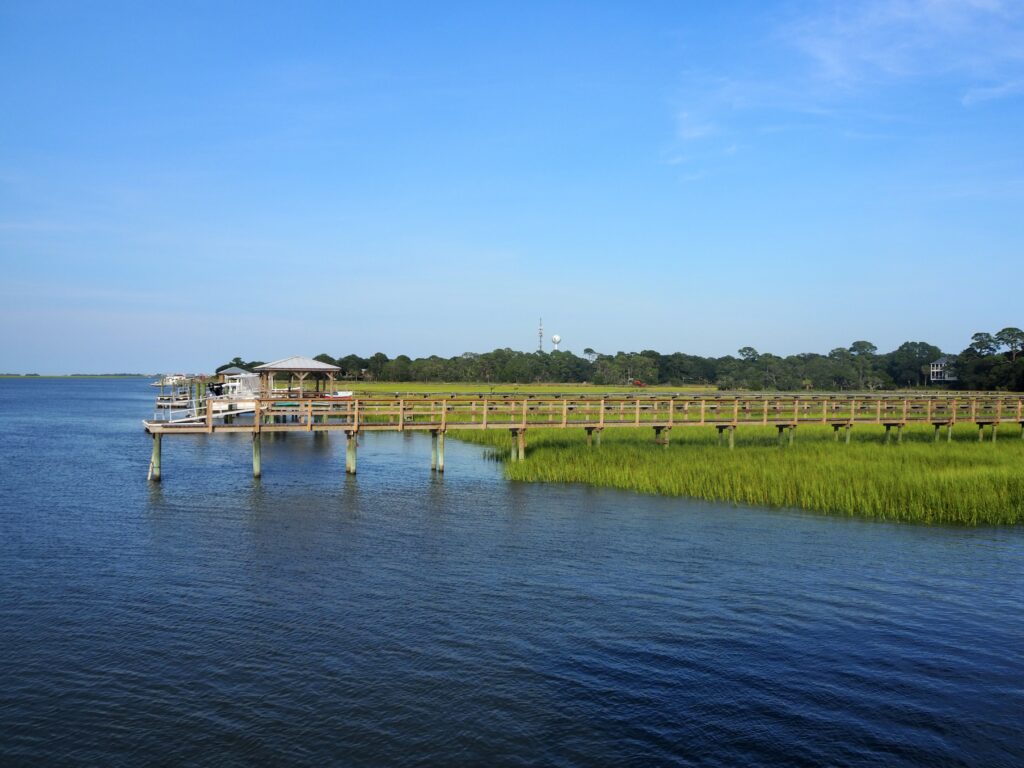

Old Slave Mart Museum
My working hours meant I couldn’t visit many museums in Charleston, but I managed to finish early and squeeze in one! I’ve mentioned the Black history of Charleston a couple of times in this post, from the era of slavery to the Gullah Geechee people still here. I thought it was important to understand more about this, so the Old Slave Mart Museum was my destination today.
Traders once sold enslaved Black people to the city’s citizens in this very building. There’s a definite sickening feeling when you imagine that while standing in the same room. But it’s important to acknowledge it happened and a great idea to educate people in that same space now. It has two floors of exhibits, starting with the upstairs exploring the history of the Transatlantic Slave Trade. When the slave trade was abolished, a new domestic slave trade then appeared within the USA, up until the total abolishment of slavery. This is the type of trade the slave mart building hosted, and the focus of the lower level. I think I spent a little under an hour and a half here, reading through all the signs.
The Rooftop at the Vendue
After leaving the museum, I ambled around the city centre for a little while. I couldn’t decide if a storm was coming again or not! Eventually I decided to take my chances though, and head up to a rooftop bar I’d read about. The Vendue is actually a hotel, just beside the Waterfront Park. It has a rooftop bar open to anyone though, accessed by a lift in the lobby. As a historically preserved city, Charleston doesn’t have huge skyscrapers like New York or other cities on my trip. But the Vendue is one of the taller options, so you can enjoy views across the city centre and the Cooper River to the east.
There was some sort of themed-evening happening while I was there, but I think I was too early for it to have really kicked off yet. They had a themed cocktail and a DJ in the indoor area of the bar, but otherwise it was mainly people sitting around drinking. The bar has a few different areas, both indoor and out, linked by stairs and corridors. I opted for outside, taking my chances with the rain clouds but making the most of the view. They do table as well as bar service, so I got comfy at a solo table and sipped on a couple of tropical cocktails, reading an e-book to pass the time. I had two drinks and still no rain, but decided that would suffice and headed off to pick up some dinner and turn in for the night.

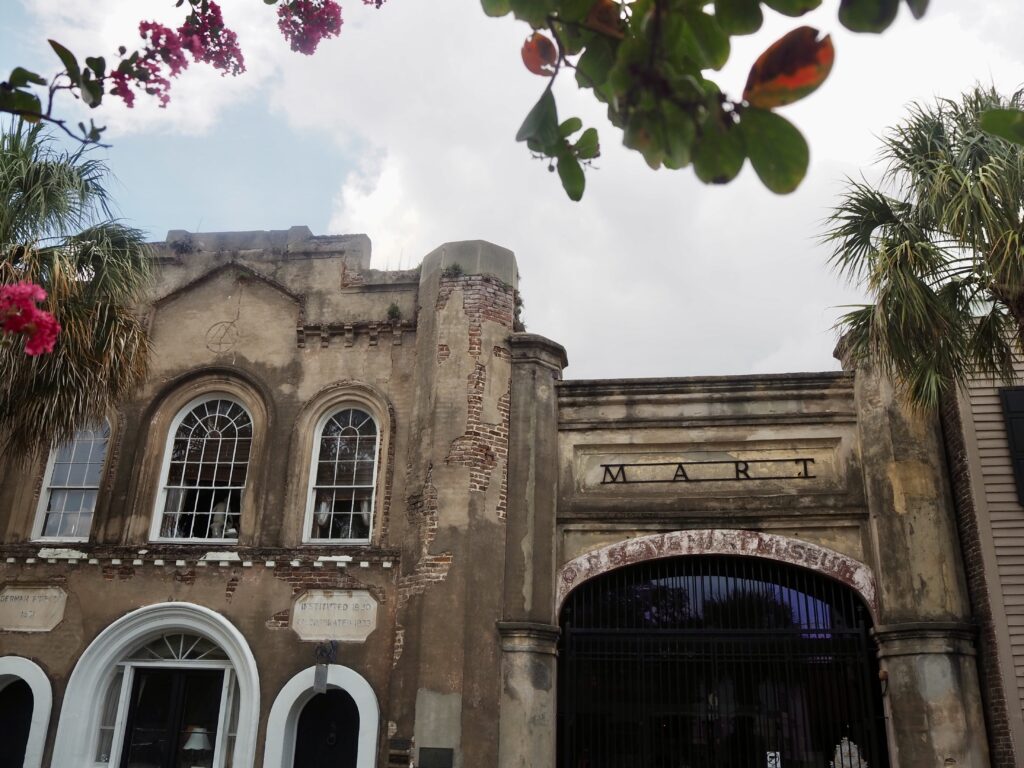
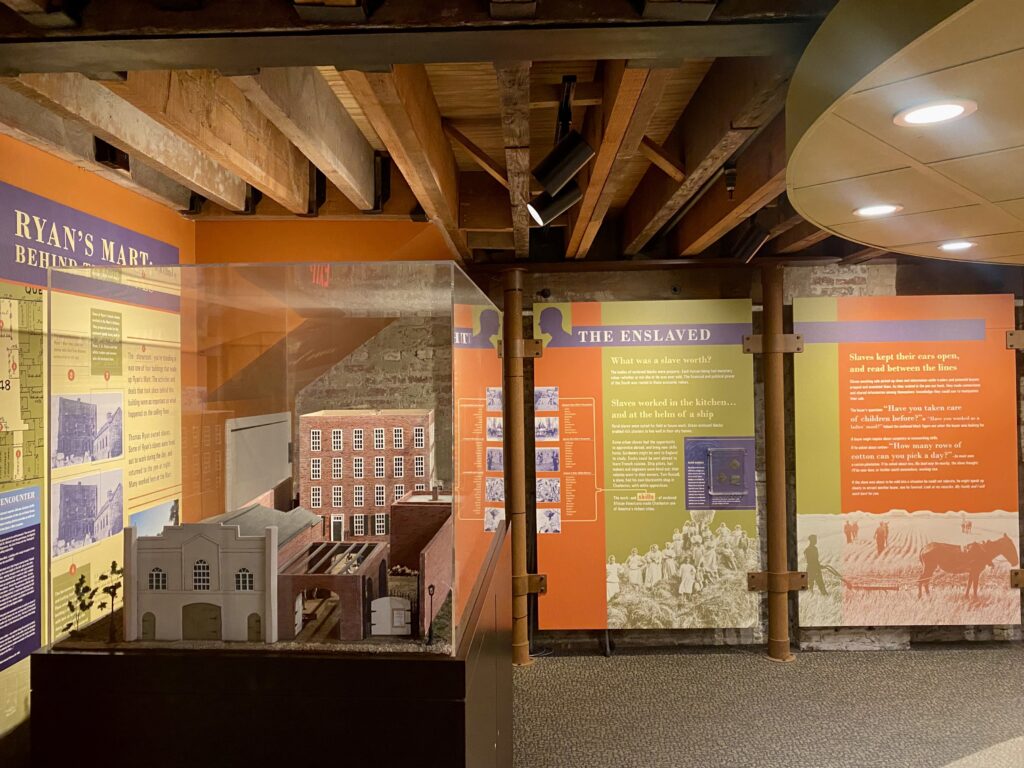
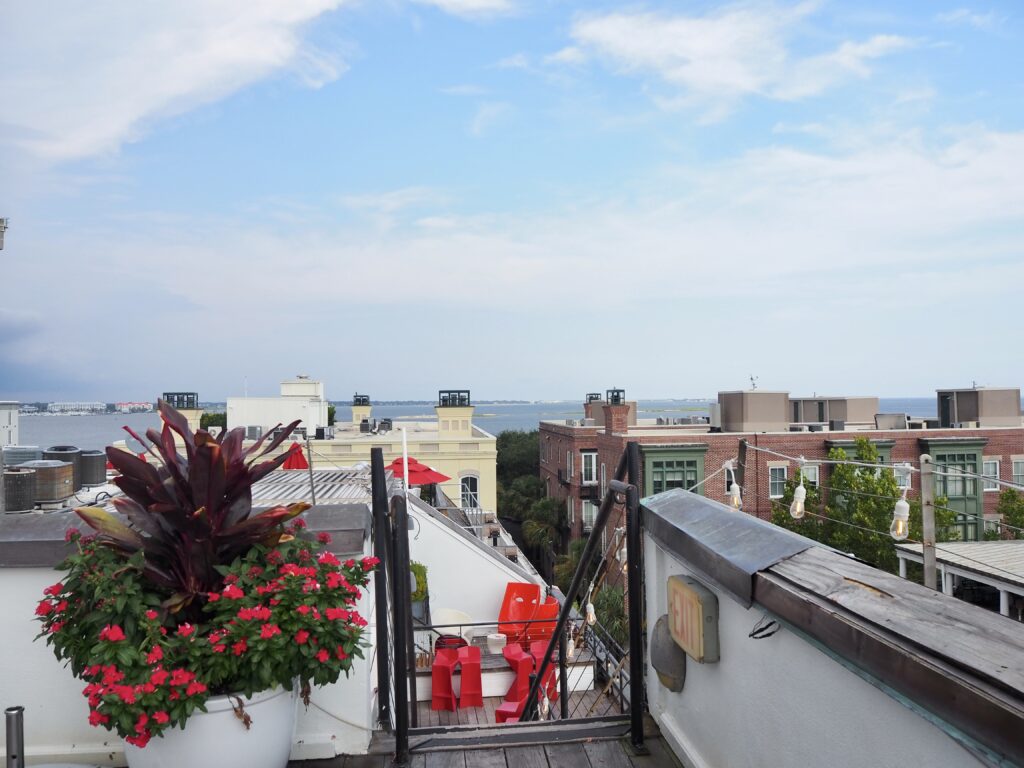
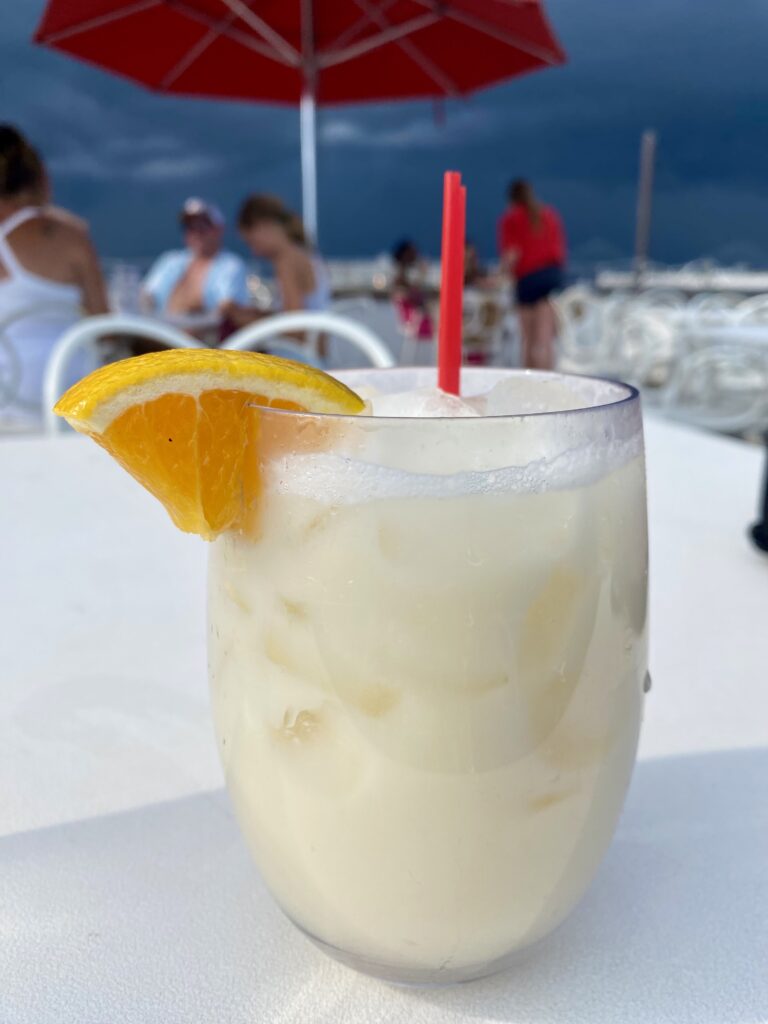
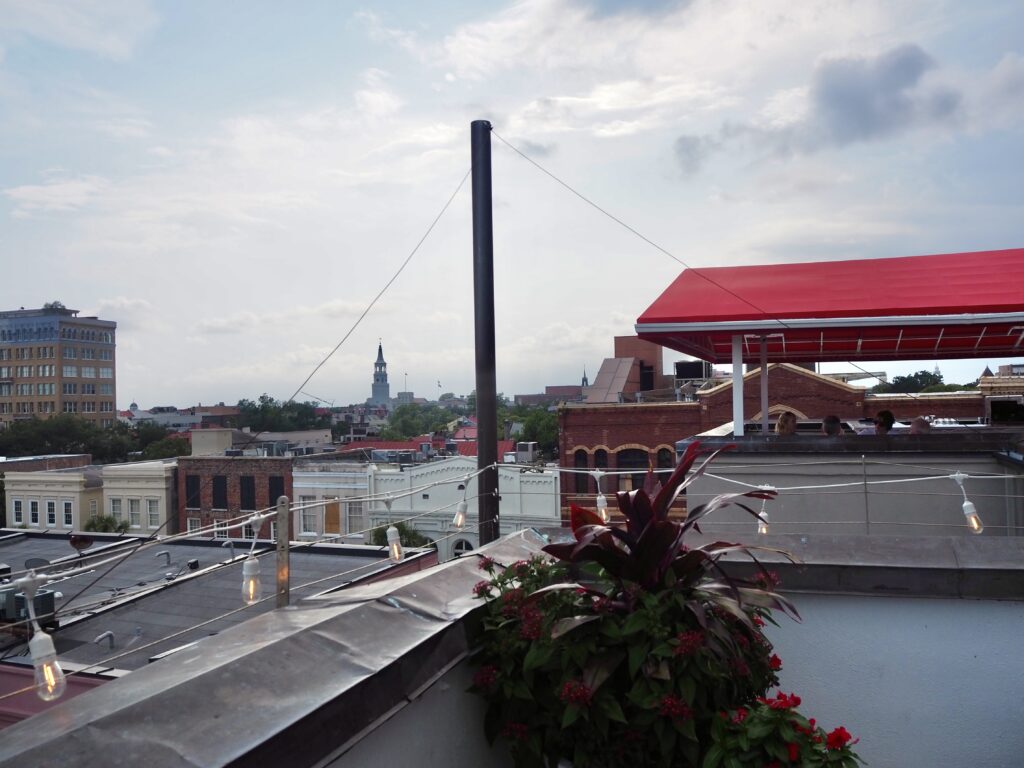
Highlights of Charleston
I spent the next day working in the hostel lounge after check-out, before grabbing an Uber to the train station that evening. As with every destination on my USA trip this summer, there was definitely more things I could have squeezed in if I hadn’t been working and needed to avoid burnout. But I was pretty happy with the highlights of Charleston that I saw! It’s got a very interesting history, including the ugly parts of it, which I was grateful that they didn’t gloss over. It’s also such a pretty city with all its older architecture and pastel colours, and I loved being by the sea again. Everything felt very laidback and casual and welcoming, compared to the hustle and bustle of some other cities. I could already tell that the South had a different vibe to New England, and I still had plenty more of it to explore!
You May Also Like
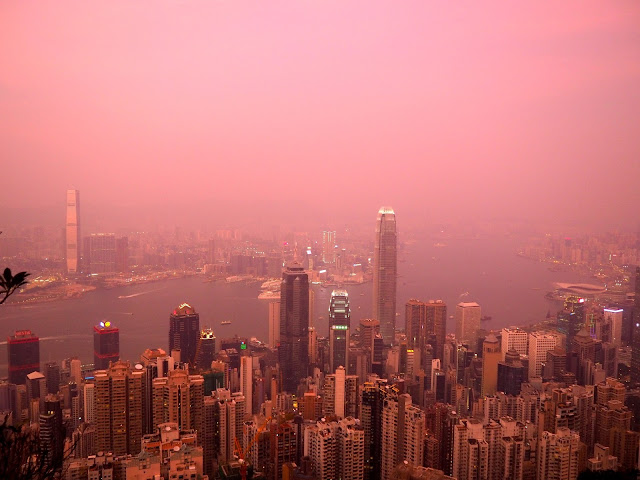
The Peak at Sunset
21 October 2015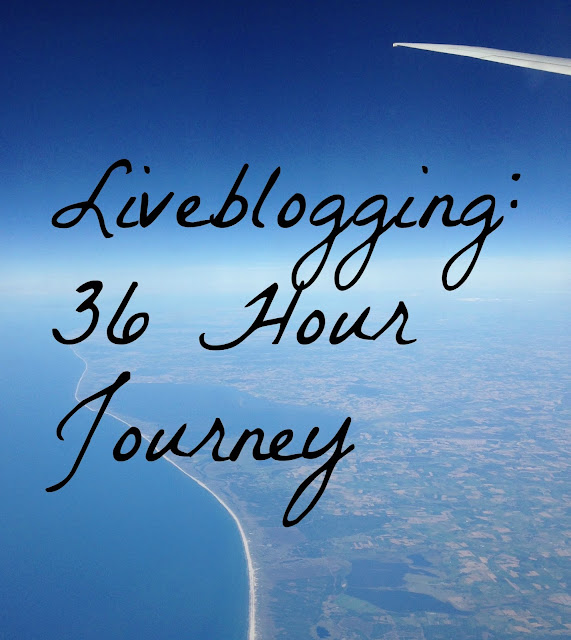
Live-blogging | 36 Hour Journey Home
22 December 2016

